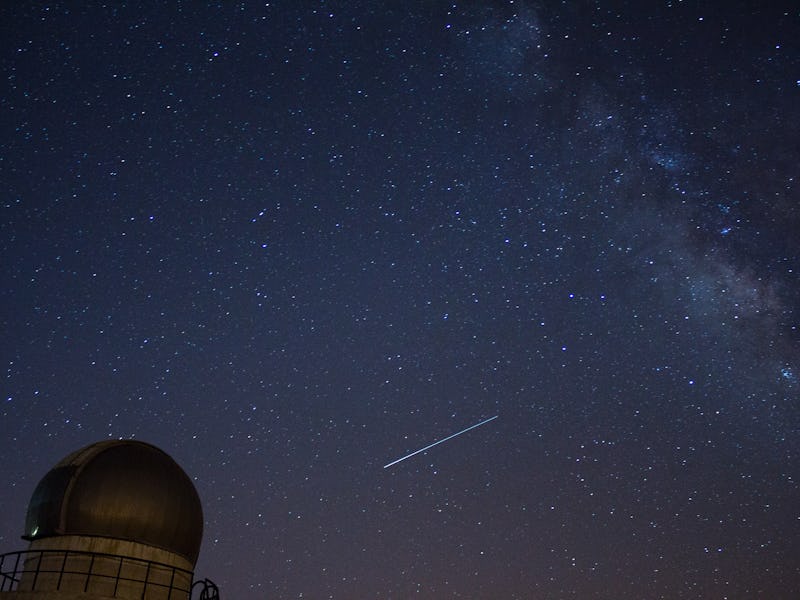Lyrid Meteor Shower: Everything to Know About the Celestial Event
Think of it as fireworks for Earth Day.

Just in time for Earth Day, the Lyrid meteor shower is going out with a bang, and maybe even a few fireballs. The cosmic light show began on April 16, but if you haven’t seen any meteors streaking across the sky just yet, you’re in luck. Sunday and Monday are expected to be the most active days before the Lyrids wrap up on April 25.
The Lyrids are expected to peak on the night of April 22 and early in the morning on April 23. During that time, the shower could produce up to 18 meteors an hour and possibly even a few fireballs, or extra bright meteors that leave behind a smokey trail and cast a brief shadow. However, some years, the Lyrid meteor shower has been known to produce upwards of 100 meteors per hour in what’s called an “outburst.” It’s difficult to predict if and when outbursts will happen, but Sunday night will be the best time to observ the shower.
The Lyrids are leftover debris from the periodic Comet C/1861 G1, aka Comet Thatcher, and radiate from the constellation Lyra. It has been observed for more than 2,600 years and is considered one of the oldest meteor showers in existence. Every April, usually around the middle of the month, Earth runs into the stream of debris from Comet Thatcher, which causes the Lyrid meteor shower.
While not as bright as other celestial happenings like the Perseid meteor shower, which tends to produce prominent trails, the Lyrids will arrive with medium brightness. In areas without much light pollution, the show will still be visible without special equipment, much like how it was discovered. Although the Lyrids were observed for over two millennia, amateur astronomer A.E. Thatcher is credited with discovering the annual meteor shower after he happened to look at the skies above his New York home in 1861.
Where to look for the Lyrid meteor shower.
The radiant, or the point from which the meteors originate, will be high in the sky on Saturday evening. It will be situated northeast of Vega, one of the brightest stars visible this time of year, so it should be easy to find. But there’s no need to stare directly at Vega since the meteors with the longest tails could be seen far from its periphery in the sky.
If you have a hard time finding Vega on Saturday, stargazing apps and telescopes will be helpful. But for those watching from an area with little light pollution, a lawn chair and warm coat will suffice.